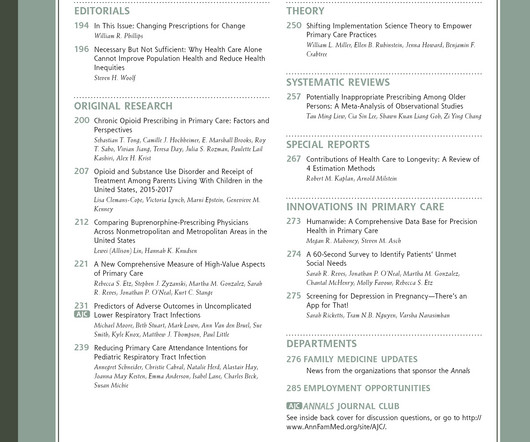Examining mobility patterns and social health of older Canadians living at home to inform decision aids about housing [Social determinants and vulnerable populations]
Annals of Family Medicine
NOVEMBER 20, 2024
GPS shows the means of transportation was mostly car (n=9) and walking (n=5), while 2 participants used the bus. The average distance travelled per person was 186.9 km (±130.4), and average per day was 16.8 km (±29.8). Daily journals showed that participants typically travelled alone.











Let's personalize your content